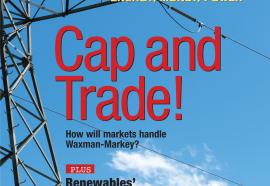Crisis Capital
Volatile markets call for alternative financial models.
Should the power industry adapt its approach to capital markets in this environment? The answer, of course, is yes. Multiple frameworks are necessary to establish a power company’s or project’s current cost of capital, especially under volatile capital market conditions. The analyses reveal that in today’s capital markets, it is critical to balance or combine the alternative approaches to the cost of capital in order to develop a long-term view.











